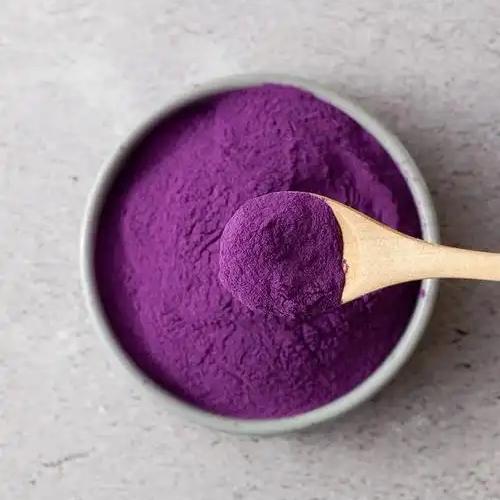植物から7天然染料
1導入
着色料 improves the color of food and is an important component of food additives. Food coloring is divided into two types: synthetic and natural. With the development of technology, it has been discovered that many varieties of synthetic coloring have serious chronic toxicity and carcinogenicity, causing widespread consumer concern. However, domestic and foreign research has found that natural pigments are not only highly safe and have a soft hue, but some also have certain physiological activities and are considered functional natural food coloring. Therefore, the development and utilization of natural pigments has become a hot research topic at this stage. This paper mainly provides a brief overview of the seven plant pigments that have been studied more, with the aim of providing theoretical support for researchers engaged in related research.
2 7つの植物色素の研究概要
2.1桑の赤い色素
Mulberries are commonly known as mulberry dates, mulberry fruit, or mulberry berries. They are the mature aggregate fruit of Morus alba L., a plant in the mulberry genus of the mulberry family. Mulberry berries are purplish red or purplish black (some are also white), with an oily, elastic texture and a slightly sour and sweet taste [1]. Mulberry red pigment is extracted from natural mulberry fruit and is a kind of anthocyanin pigment[2]. Anthocyanins exist in the form of glycosides, i.e. anthocyanins, in their natural state. Anthocyanins have a typical C6 - C3 - C6 carbon skeleton structure and are therefore considered to be a kind of flavonoid. It can reduce the fat content of serum and liver, and has anti-mutagenic and anti-tumor effects [3]. Mulberry pigment shows some instability in heating and ultrasound treatment in different concentrations of hydrochloric acid, citric acid, tartaric acid and ascorbic acid, but the degree of instability varies with the type and concentration of acid, and the change is complex. Comparatively speaking, the pigment in ascorbic acid solution is most unstable to heating and ultrasonic treatment, while the pigment in hydrochloric acid solution is relatively stable to heating treatment; the pigment in citric acid solution is relatively stable to ultrasonic treatment [4].
Li Xinlei et al. [5] determined the optimal conditions for the extraction of mulberry pigments through single-factor and orthogonal test studies: 80% ethanol, a material-to-liquid ratio of 1:3 (g/mL), an extraction temperature of 30°C, and an extraction time of 0.25 h. The order of influence of each factor was: material-to-liquid ratio > ethanol concentration > extraction time > extraction temperature. Xiao Gengsheng et al. [6] studied the dynamic changes of the main pigments during the ripening of mulberries, using high performance liquid chromatography (HPLC) to detect the main anthocyanin components during the ripening process of mulberries, which mainly include cyanidin-3-O-glucoside (C3G), cyanidin-3-O-rutinoside (C3R) and pelargonidin-3-O-glucoside (Pg3G). 3 The changes in the three components are as follows: C3G and C3R are the two main anthocyanin components in mulberries throughout the ripening period, and C3G tends to gradually increase, while C3R first increases and then decreases slightly, and then rapidly increases in the later stage. Pg3G is not detected at the beginning of the ripening and growth of mulberries, and then first increases and then decreases, and then rapidly increases in the later stages. In production, the characteristics of the content of the main pigments in mulberries and the accumulation of anthocyanin compounds can be used as one of the reference factors for determining the appropriate time to harvest mulberries.

2.2ブドウの皮膚色素
グレープ皮膚色素は、安全で非毒性であり、特定の栄養素を含んでいる天然のアントシアニン色素です。彼らは抗酸化と遊離基を掃討する効果があり、特定の薬効と健康上の利点があります。また、食品や化粧品の着色剤としても使用できます[7]。一部の文学の報道を抽出すること過程でき天然顔料から得られた皮行なった享保のブドウから直交実力テスト:を用いた無水エタノール抽出代行、5.00よりg "原料を抽出する35 mLエージェントの抽出pH 3実在80°Cの温度、および抽出1 hを各要因の影響が深刻な順は抽出月日の>た;抽出剤の量>抽出pH >抽出温度できます。[8]
wang chunrongら[9]は、巨峰の皮からの色素の抽出条件について論じている。その結果、エタノール70% +クエン酸0.5%(容積比5:1)が最も効率的であり、次いでエタノール80% +クエン酸0.5%(5:1)であった。 5%クエン酸(5:1);抽出液に70%エタノール+ 0.5%クエン酸(5:1)を使用し、抽出液へのブドウ皮の質量は1:10 (g/ ml)、最適温度は65°c、最適抽出時間は90分、抽出に最適phは2.0である。ブドウの皮膚色素の安定性に関する研究によると、酸性度は色素の安定性に重要な影響を与え、色素の色を強くする効果がある。低温は色素の貯蔵に役立つ。日光に長時間さらされると色素が徐々に劣化する。金属イオンfe3 +は、顔料の安定性に大きな影響を与えます;添加剤h2o2は顔料の安定性に大きな影響を与える。ビタミンc水溶液、ショ糖水溶液、安息香酸ナトリウムは顔料の安定性にわずかな影響を与える[10]。[11]李yanmeiらはバラの香りのブドウの皮膚色素の抗酸化活性を研究し、バラの香りのブドウの皮膚色素は強い還元力があり、効果的にヒドロキシルラジカルを除去することができることを発見した;また、マウス肝臓の自発的な脂質過酸化を抑制する効果もあります。
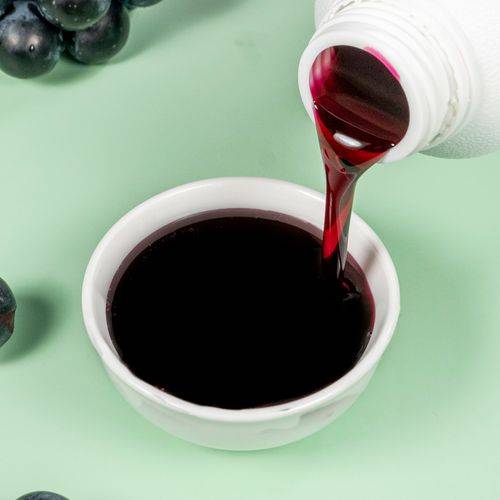
2.3みかんの皮の色素
tangerine peel pigmentは、広く使用されている天然顔料の一種です。主に、みかん、みかん、ポメロ、柚子、スイートオレンジ、ライム、キンカン、クチナシなどの植物の皮に見られます。タンジェリンピール色素、タンジェリンピールフラボノイド、タンジェリンピール多糖類などの活性物質が豊富です。食品着色剤として重要な開発・利用価値を有する[12]。タンジェリンピール色素の抽出法の研究では、超音波支援抽出法が工業生産におけるタンジェリンピール色素の抽出に理想的な方法であることが示されています。超音波周波数40 khz、エタノール濃度6 5%、液対固比1:10、抽出温度60°c、抽出時間30分、抽出回数2回、これらの条件下でのタンジェリン皮色素の収率は6.03%である[13]。geng jingzhang[14]は、タンジェリンの皮色素を抽出するための最適なプロセス条件は、超音波周波数(47.6 khz)、抽出溶媒55%エタノール、抽出時間15分、抽出温度60°c、物質と液体の比1:15であると考えている。また、オレンジピール色素の活性についても多くの報告があります。
Li Lingxu et al. [15] extracted alcohol-soluble pigments, ether-soluble pigments, alcohol-water-soluble pigments and water-soluble pigments from orange peels, and used the mycelial growth rate method to preliminarily determine the antibacterial activity of different solvent extracts of orange peels against seven pathogenic fungi such as apple rot fungi. The results showed that ether-soluble pigments and alcohol-water-soluble pigments had different degrees of inhibitory effects on the seven plant pathogenic fungi. Wang Hongtao [16] determined the antibacterial effect of orange peel pigments on common microorganisms and the effect of commonly used food additives and light on the stability of pigments through single factor experiments to explore the antibacterial and stability of orange peel pigments. The study found that orange peel pigments have different degrees of inhibitory effects on common pathogenic bacteria, yeasts and molds.
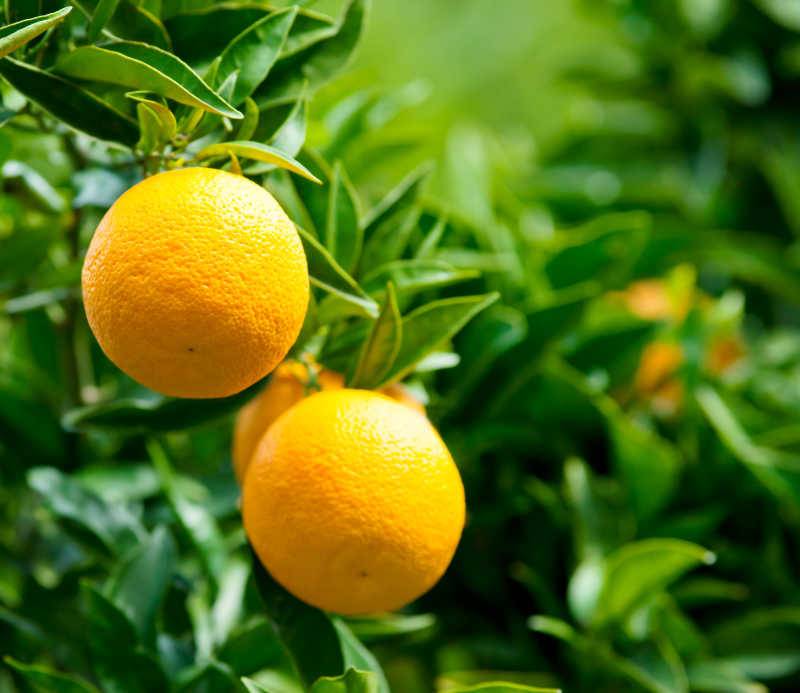
栗貝色素
Chestnut shell pigment is a natural brown pigment with good water solubility, strong coloring power and stable properties. It has a certain degree of antioxidant and antibacterial effects, and is currently one of the few 自然食品色with stable properties. It has high development value. Zhang Yaping [17] established the extraction conditions for chestnut shell pigment by analyzing the factors affecting the extraction of chestnut shell brown pigment: the mass fraction of NaOH was 2%, the extraction temperature was 80°C, and the extraction time was 3 h. Zhou Guoyan et al. [18] extracted pigments from chestnut shells using ethanol and ultrasound methods, compared the two methods, and studied the antibacterial properties and applications of the pigments in chestnut shells. The results showed that ultrasonic waves have the advantages of saving time, energy and a high extraction rate. The optimal process parameters for the ultrasonic-assisted extraction method were 40% ethanol volume fraction, 200 W ultrasonic power and 8 min of action time. Chestnut shell pigments have an inhibitory effect on Bacillus subtilis, Escherichia coli, Aspergillus niger and Penicillium. They also have a certain preservative effect on apple juice.
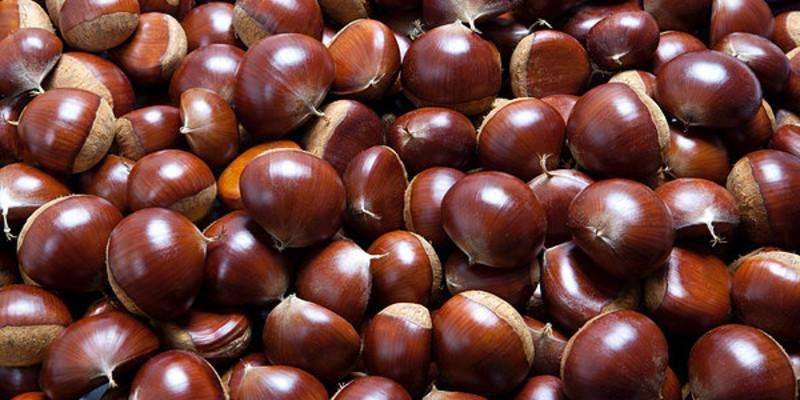
2.5黒米
黒米は中国で非常に特徴的な米のタイプです#39の米の種子資源。それは自然な色、香り、栄養、治療特性が豊富です。黒米にはタンパク質、17アミノ酸、脂肪、ビタミン、ミネラル、鉄、zn、cuなど14の元素が豊富に含まれており、重要な薬効を持つ黒米色素が含まれている。多くの研究によると、黒米色素は、アントシアニン色素、植物のポリフェノール化合物であり、冠状動脈性心疾患の発生を減少させる効果があり、視力を改善し、抗酸化と抗がん活性を有することが示されている[19]。wang fengjieら[20]は、黒米色素の安定性に関する系統的研究を行い、黒米色素は直接光と酸化剤に感受性があるが、低温と還元剤には感受性がないことを示した。金属イオンca 2+、cu 2+、zn2 +、mg 2+、na +の安定性への影響は明らかではない。
Wu Suping [21] used black rice as a raw material and used ethanol as an extraction agent to extract 玄米色素s, and studied the process and its process conditions. The optimal extraction process parameters were obtained through single factor and orthogonal experiments: ethanol volume fraction 50%, grinding degree 50 mesh, liquid-to-material ratio 1:5, extraction time 30min, extraction temperature 80°C, extraction pH=3. The stability of black rice pigment was also studied. The results showed that KMnO4 had a greater effect on black rice pigment, while Vc and citric acid had no significant effect. The results of the changes in pigment and amino acid content during the germination of black rice showed that the color value of black rice pigment extract was positively correlated with the temperature; the batch of extraction and whether the sample was degreased also had a significant effect on the color value of the extract [22]. In addition, black rice pigment has a certain reducing power, and has a strong scavenging effect on hydroxyl radicals and DPP H, as well as a certain degree of inhibitory effect on superoxide anions. Within the experimental concentration range, the maximum scavenging rate of hydroxyl radicals was 90.42%, and the maximum scavenging rate of DPP H radicals was 84.68%, indicating that black rice pigment has broad application prospects as a natural pigment with antioxidant properties [23].
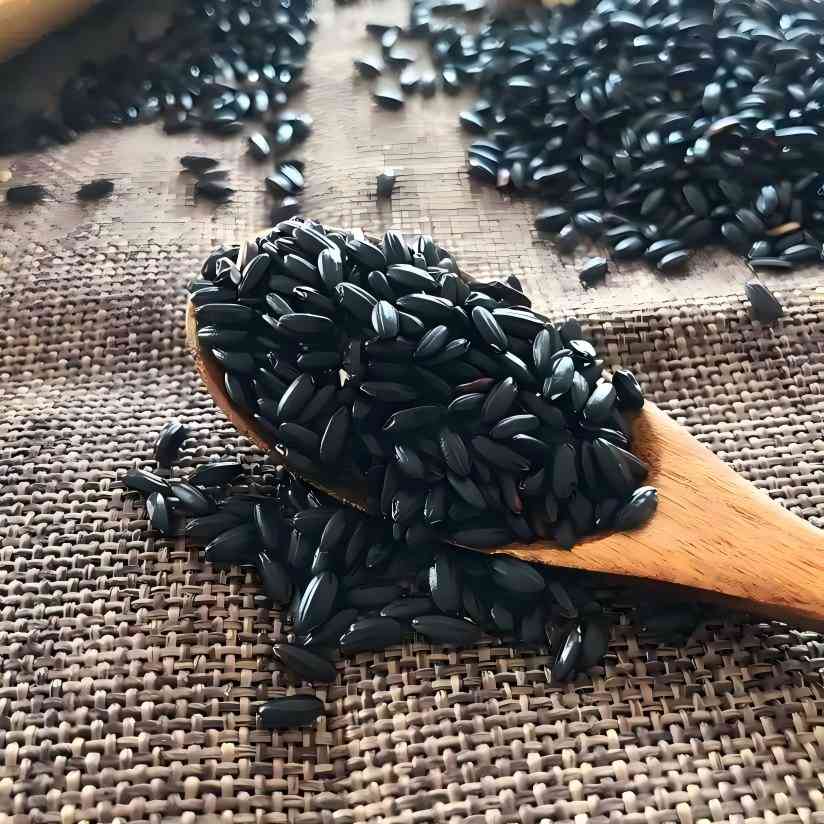
2.6マンゴスチン殻色素
マンゴスチン(mangosteen)は、ツバキ科の常緑樹である。果実には栄養があり、発熱を緩和し、脂肪を溶かし、皮膚を保湿し、内部熱を下げる効果がある。果皮には色素成分が豊富に含まれており、天然色素として利用できる。zhang binら[24]は、マンゴスチン殻色素の安定性に対する光、温度、酸化還元剤、phおよび食品添加物の影響を調べた。その結果、可視光領域における色素の最大吸収波長は478 nmであり、抽出には70%エタノールが最適であることが分かった。この顔料はアルコール可溶性顔料で、酸性、中性、弱アルカリ性の条件での使用に適しています。耐酸化性が高く、ある程度の耐熱性があります。金属イオンca2 +、cu2 +、mg2 +、na +、安息香酸ナトリウム、クエン酸、vc、塩化ナトリウム試薬などの食品添加物はマンゴスチン殻色素の安定性にほとんど影響しない。紫外線、屋外の日光、fe3 +、還元剤、重炭酸ナトリウム、ブドウ糖は、この色素に一定の減色効果を与えます。
peng wenshuらは、さまざまな条件下でマンゴスチンの果実の殻から抽出した色素の安定性と抗菌活性を調べた[25]。マンゴスチン果皮色素は、異なるph温度および異なる濃度の金属イオン、酸化剤、還元剤、および一般的な防腐剤で処理された。その結果、マンゴスチン果皮色素はph <でより安定していた。6温度が80°cを超えると、色の強調効果が高まります。様々な金属イオンはほとんど影響を与えませんマンゴスチン果皮色素は酸化しやすく還元される;また、防腐剤の濃度が高いほど、安定性に大きな影響がありました。静菌実験では、マンゴスチン殻抽出物がカビ、細菌、酵母に対して強い静菌効果を持つことが示されている。阻害効果は、色素質の濃度の増加に伴って増加し、静菌効果は、次の順序である:連鎖球菌viridans >octopodis菌>は芽胞>Saccharomyces cerevisiae >麹菌ニジェール>贺氏菌dysenteriae >大腸菌。その結果、この色素は良好な安定性と抗菌活性を有し、食品、飲料添加物、医薬品産業において天然植物色素として使用できることが示された。
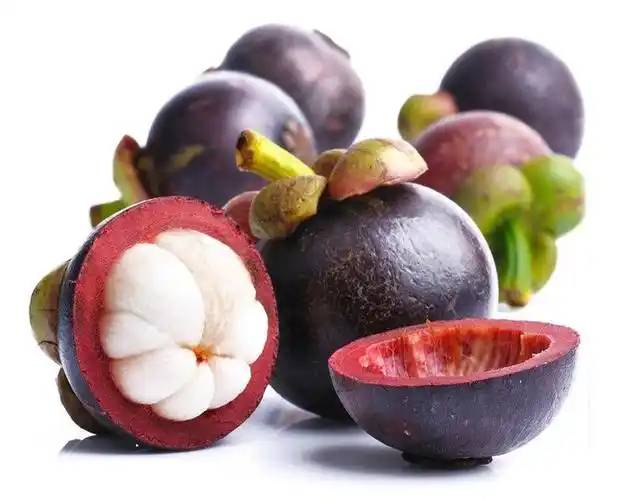
2.7紫さつまいも色素
紫さつまいも(pspc)は紫さつまいもの塊茎や葉から抽出される天然色素です。それは明るく自然な色を持っていて、無毒であり、特に臭いがなく、様々な栄養、薬理学的および健康保存機能を持っています[26]。抽出溶媒に塩酸水溶液0.2%、液対固比1:5、抽出温度50°c、抽出時間2時間で、より高い抽出収率が得られることが報告されている。粗エキスをマクロポーラス吸着樹脂pda-100でろ過・吸着し、70%エタノールで分解する。濃縮され乾燥した溶離液を使用して、em530 nm= 100[27]の高い色値を有する紫色サツマイモ色素の粉末製品を得ることができる。
羅月中[28]は、韓国産紫芋を原料に、アルコールや有機酸溶液などの溶媒で色素を抽出する条件を研究した。抽出液の濃度、物質と液体の比率、抽出回数、抽出時間などの要因の影響を調べた。は実験直交実験によって、それ最適な超音波抽出後は以下の通り。pre-soak 4 hのムラサキ芋をするためサンプルを濃度0.103%のクエン酸を使いで10% material-liquid比率はタロットカード300 Wの超音波電力抽出時間25分、3回抽出た記録が。紫芋からの色素抽出効果は最高です。
薛強らは、抽出溶液ph 3、抽出時間120分、抽出温度60°c、材料比1:20、抽出収率17.3 mg/100 gが最良のプロセス条件であると報告している[29]。紫サツマイモの色素は、温度、光、金属イオンに対して比較的安定である。紫サツマイモの色素の活性については、han yongbinら[30,31]が、紫サツマイモのアントシアニンの抗菌機構を分子的に検討した。まず、ゲルブロック実験を用いて、大腸菌と黄色ブドウ球菌のdnaの移動速度を調べました。次に、臭化エチジウムを蛍光プローブとして用い、紫サツマイモ色素と大腸菌、黄色ブドウ球菌のdna系の紫外線スペクトルと蛍光強度の変化を調べました。以上の研究では、紫サツマイモの色素が細菌のdnaに及ぼす影響と作用機序を調べ、紫サツマイモの色素の抗菌機構を分子レベルで理解し、紫サツマイモの色素の構造と機能の相互関係を明らかにしました。
3結論
植物由来の天然色素は、一般的に植物の二次代謝物であり、含有量が少なく安定性が低い。そのため、適切な天然顔料の選択、安定性の高い新規天然顔料の開発、新規天然顔料供給源の探索が急務となっています。中国には豊富な植物資源がある。これらの貴重な植物資源を積極的に開発・活用し、天然色素の抽出法とその活動を深く研究することは、非常に実用的な意義がある。
参照
[1]鄭Jianxian。機能性食品(volume 2) [m]。北京:中国軽工業出版社。1999年。
【2】中国食品添加物製造応用工業協会。食品添加物ハンドブック[m]。北京:中国軽工業出版、1999年。
【3】唐川河、彭智英。天然アントシアニン色素の生理機能と応用の展望[j]。冷たいお飲み物・冷凍食品産業2000(1):26。
【4】朱清真、夏紅、丁俊鵬。桑色素の安定性に関する研究[j]。食品科学技術,2010,35(5)274-276
[5] li xinlei, li jiyuan, fan zhengqi, et al。桑色素抽出条件の最適化[j]。上海農業ジャーナル、2010年、26(3):60-63。
[6] xiao gengsheng, wang zhenjiang, tang cuiming, et al。桑の成熟過程における主な顔料の動的変化[j]。, 2011, 37(4): 600-605。
【7】唐川河、彭智英。天然アントシアニン色素の生理機能と応用の展望[j]。冷たいお飲み物・冷凍食品産業から2000年まで26(1):た
【8】李延平、馬西平。ブドウ皮膚色素の抽出過程に関する研究[j]。南中国の果樹,2010,39(6):57-58。
【9】王春栄、韓翔、劉玄。ブドウ皮膚色素の抽出条件に関する研究[j]。^ a b北村(2010)、75-77頁。
【10】周錦美、gong jingli。ブドウ皮膚色素の安定性に関する研究[j]。^ a b北村(2011)、27-28頁。
【11】李延美、李国寅、趙富順。マスカットからの皮膚色素抽出とその抗酸化活性の研究[j]。食品産業科学技術,2011,32(7):164-166。
[12] sun c d, chen k s, chen y . 4品種の柑橘類の異なる組織におけるリモニンおよびノミリンの果実成長および成熟時の含有量および抗酸化能[j]。食品化学2005,93(4):599-60。5
[13]王Hongtao。ミカン皮色素の抽出法に関する研究[j]。2011年農業科学江蘇、39(6):464-466。
[14]耕助Jingzhang。超音波を用いたタンジェリン皮色素の抽出と安定性に関する研究[j]。」。food science and technology, 2010, 35(10): 252-256。
【15位】李令緒、曲良良、孟兆麗ミカン皮色素の静菌活性[j]。2010年農業科学湖北、49(1):80-82。
[16]王Hongtao。ミカン皮色素の静菌性と安定性に関する研究[j]。2011年食品機械、27(6):163-165。
〔17〕張邓亜萍。栗殻色素の抽出工程[j]。^『仙台市史』、仙台市、2009年、36(3):31-32。
[18] zhou guoyan, sang yingying, gong chunbo, et al。栗殻色素の抽出プロセスと抗菌性の最適化[j]。^『官報』第1031号、大正10年(1921年)10月22日。
【19】呉思平、徐貴華。黒米の栄養価とその応用に関する議論[j]。2004年(平成16年):5-6号。
[20]王奉節、沈国亮、王永節。黒米顔料の安定性と応用に関する研究[j]。農業機械、011、(4):160-163。
[21] wu s p .黒米顔料の抽出と安定性に関する研究[j]。chinese condiments, 2011, 36(12):
[22] fu w, sun y m .黒米発芽における色素およびアミノ酸含有量の変化に関する研究[j]。安徽農業科学,2012,40(3):1476-1478。
【23】李新華、李岳文。黒米色素の抗酸化能に関する研究[j]。穀物、油および食品加工,2010,(6):106-108。
[24]張斌、侯xiaozhen、郭麗沙。マンゴスチン甲羅色素の安定性に関する研究[j]。2011年食品機械、27(3):35-38。
[25] peng wenshu, chen yijian, zhong wenwu, et al。マンゴスチン貝色素の安定性と抗菌活性に関する研究[j]。」。food research and development, 2011(32)(12): 55-60。
[26] an kang, fang boping, chen jingyi, et al。サツマイモの健康管理機能の研究開発[j]。広州農業科学技術、2004年(s1): 6-9。
[27] cheng linrun, guo ruan, zhu pu, et al。紫さつまいも色素の抽出・精製に関する研究[j]。^『仙台市史』通史編1、通史編1、89-91頁。
【28】羅月中、李継瑞、正礼。紫サツマイモ色素の抽出過程に関する研究[j]。江蘇調味料と非主食,2010,28(1):4-7。


 英語
英語 フランス
フランス スペイン
スペイン ロシア
ロシア 韓国
韓国 日本
日本